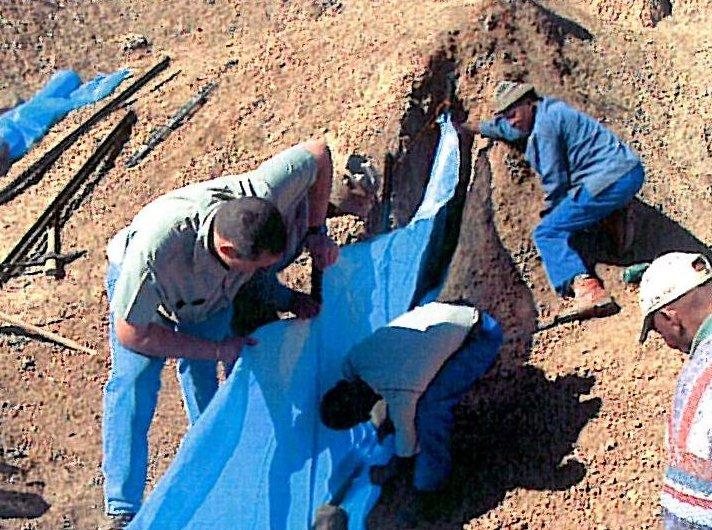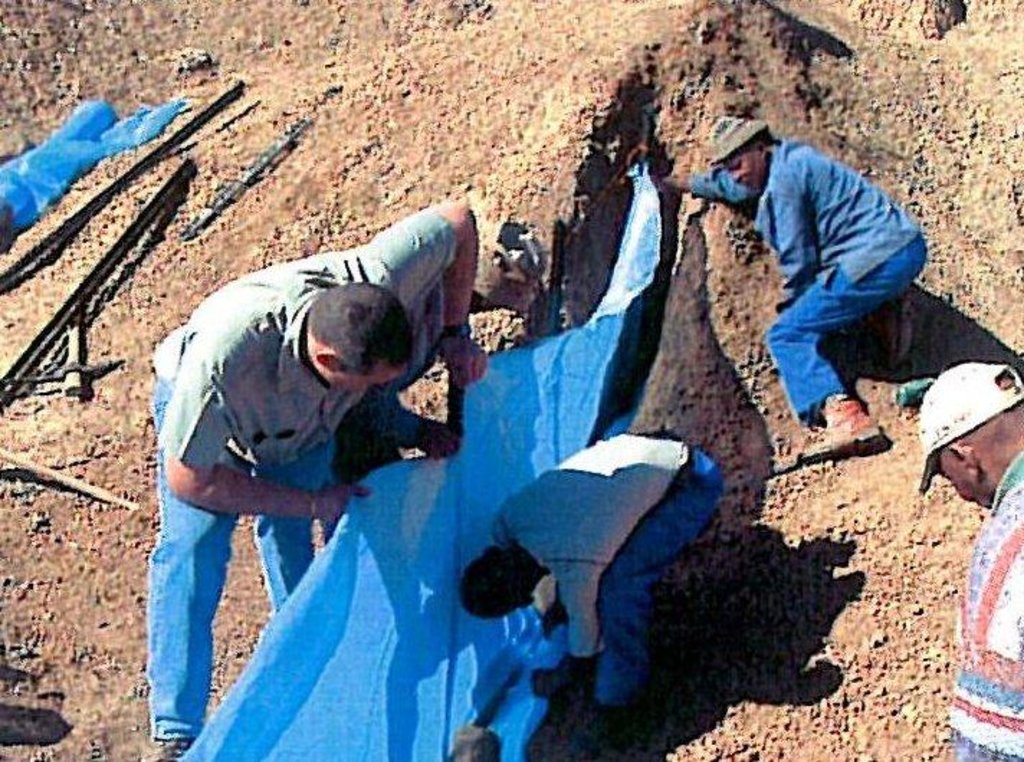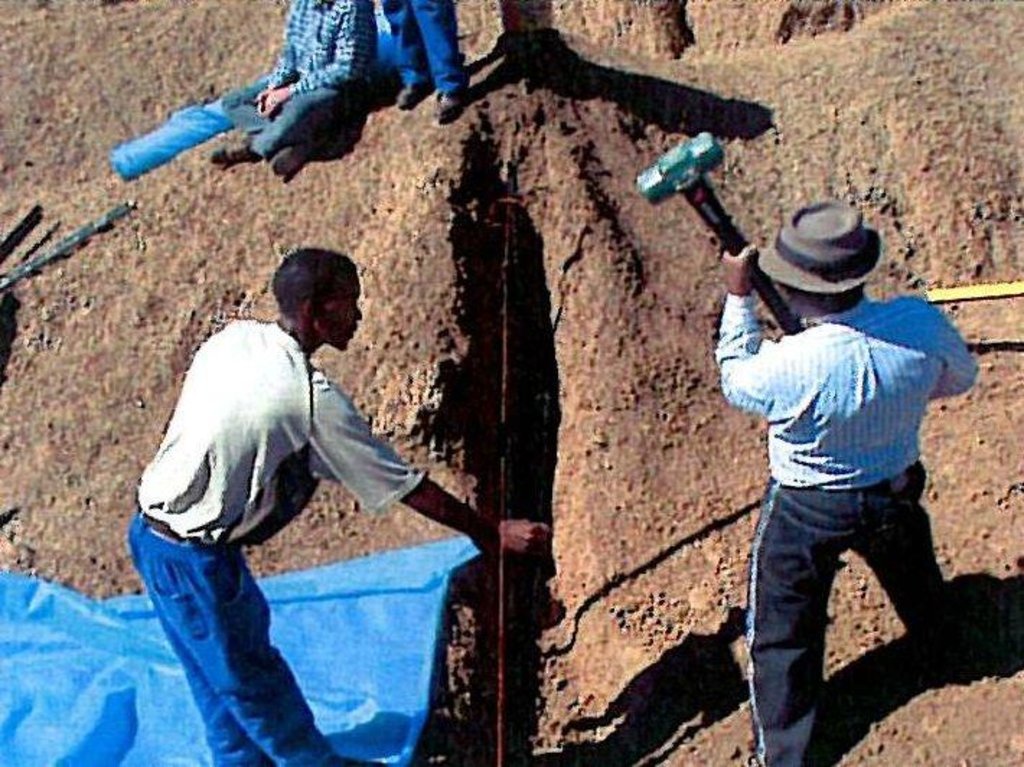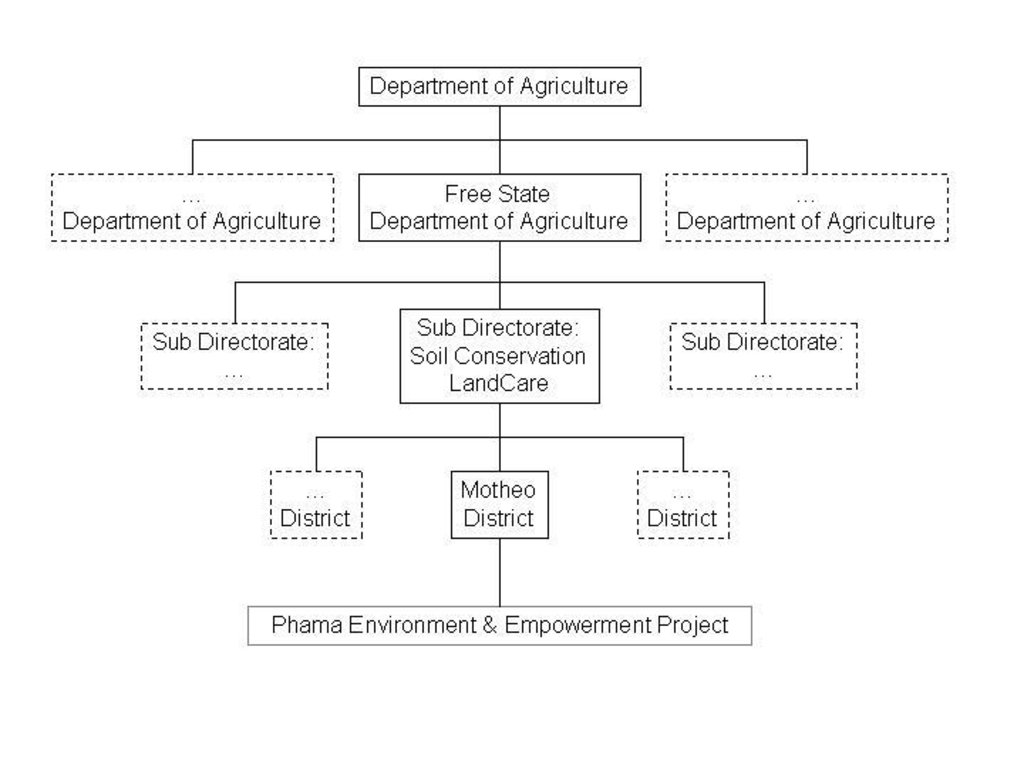Alternative and cost effective methods to control soil erosion [南非]
- 创建:
- 更新:
- 编制者: Christiann Smith
- 编辑者: –
- 审查者: Fabian Ottiger
approaches_2654 - 南非
查看章节
全部展开 全部收起1. 一般信息
1.2 参与方法评估和文件编制的资源人员和机构的联系方式
1.3 关于使用通过WOCAT记录的数据的条件
编制者和关键资源人员接受有关使用通过WOCAT记录数据的条件。:
是
2. SLM方法的描述
2.1 该方法的简要说明
Alternative and cost effective methods to control soil erosion
2.2 该方法的详细说明
该方法的详细说明:
Aims / objectives: Research alternative, cost effective measures to control soil erosion Training of potentail contractor to errect soil conservation structures (Black Economic Empowerment) Wider acceptance and adoption of techniques by neighbouring communities
Methods: On-site research Literature research Needs analysis Trial and error Awareness ampaigns and information days Job creation to build structures
Stages of implementation: Control invader plants Literature research Design small structures Construction of erosion structures and stock watering Research on run-off trials Data analysis Information sharing
Role of stakeholders: Construction of small structures, controll invader plans, construction of stock watering
2.3 该方法的照片
2.5 采用该方法的国家/地区/地点
国家:
南非
区域/州/省:
South Africa / Free State
有关地点的进一步说明:
Ladybrandt
2.6 该方法的开始和终止日期
注明开始年份:
2006
终止年份(若不再采用该方法):
2009
2.7 方法的类型
- 基于项目/方案
2.8 该方法的主要目的/目标
The Approach focused mainly on SLM with other activities (Control invader and alien plants)
Research alternative, cost effective measures to control soil erosion Training of potentail contractor to errect soil conservation structures (Black Economic Empowerment) Wider acceptance and adoption of techniques by neighbouring communities
The SLM Approach addressed the following problems: Soil erosion Lost of grazing due to invader and alien plants Over grazing Lack of stock / grazing management Lack of knowledge
2.9 推动或妨碍实施本办法所适用的技术的条件
财务资源和服务的可用性/可得性
- 阻碍
Community has limited financial resource for conservation
Treatment through the SLM Approach: Project will provide funding for implementation of structures
法律框架(土地使用权、土地和水使用权)
- 阻碍
The existing land ownership, land use rights / water rights moderately hindered the approach implementation Stock owners association rules was too rigid and land users are not owners (communage) - no private ownership. Members of cattle association differ.
了解SLM,获得技术支持
- 阻碍
Community does not have technical know-how to design small structures
Treatment through the SLM Approach: Project provides technical inpust
其他
- 阻碍
Knowledge: Little knowledge about cost-effective measures to control soil erosion
Treatment through the SLM Approach: Project will provide funding for implementation of structures
3. 相关利益相关者的参与和角色
3.1 该方法涉及的利益相关者及其职责
- 当地土地使用者/当地社区
Stock owners, contractors and community members
Men will do more physical work like building rock structures or fitting of rock gabions
- SLM专家/农业顾问
- 国家政府(规划者、决策者)
Provincial Department of Agriculture technical officials
- 国际组织
3.2 当地土地使用者/当地社区参与该方法的不同阶段
| 当地土地使用者/当地社区的参与 | 指定参与人员并描述活动 | |
|---|---|---|
| 启动/动机 | 被动 | |
| 计划 | 被动 | |
| 实施 | 外部支持 | |
| 监测/评估 | 互动 | |
| Research | 无 |
3.3 流程图(如可用)
3.4 有关SLM技术选择的决策
具体说明谁有权决定选择要实施的技术:
- 主要是SLM专家,咨询土地使用者之后
解释:
Decisions on the method of implementing the SLM Technology were made by mainly by SLM specialists with consultation of land users
4. 技术支持、能力建设和知识管理
4.1 能力建设/培训
是否为土地使用者/其他利益相关者提供培训?:
是
- land user
培训形式:
- 示范区域
- 公开会议
- 课程
涵盖的主题:
Construction of SWC structures and training on veld management. Control of invader plants.
4.2 咨询服务
土地使用者有权使用咨询服务吗?:
是
指明是否提供了咨询服务:
- 在土地使用者的土地上
说明/注释:
Name of method used for advisory service: Cost effective erosion control and veld management; Key elements: Awareness, Meetings formal and informal, Farm visits and participatory approaches
Advisory service is quite adequate to ensure the continuation of land conservation activities; Empowered through project to continue with SWC activities
4.4 监测和评估
监测和评估是该方法的一部分吗?:
是
注释:
technical aspects were regular monitored through measurements; indicators: Functionaing (effectiveness) of structures
socio-cultural aspects were ad hoc monitored through observations; indicators: Adoption of technology
area treated aspects were regular monitored through measurements; indicators: Area treatede / conserved
no. of land users involved aspects were regular monitored through measurements; indicators: No. of community actively involved
management of Approach aspects were regular monitored through measurements; indicators: Maintenance and acceptance
There were few changes in the Approach as a result of monitoring and evaluation: Redesign of small structures and different application of materials
4.5 研究
研究是该方法的一部分吗?
是
明确话题:
- 生态学
提供进一步的细节,并指出是谁做的研究:
Run-off trials and participatory approaches for community participation
Research was carried out on-farm
5. 融资和外部物质支持
5.1 该方法中SLM组成部分的年度预算
如果不知道准确的年度预算,请给出一个范围:
- 100,000-1,000,000
注释(例如主要的资助来源/主要捐助者):
Approach costs were met by the following donors: government (Agricultural Research Council): 80.0%; national non-government: 15.0%; local community / land user(s): 5.0%
5.2 为土地使用者提供财政/物质支援
土地使用者是否获得实施该技术的财政/物质支持?:
是
5.3 对特定投入的补贴(包括劳动力)
- 设备
| 具体说明哪些投入得到了补贴 | 程度如何 | 对补贴做出具体说明 |
|---|---|---|
| 机械 | 部分融资 | |
| 工具 | 部分融资 | |
- 农业
| 具体说明哪些投入得到了补贴 | 程度如何 | 对补贴做出具体说明 |
|---|---|---|
| 种子 | 充分融资 | |
| 化肥 | 充分融资 | |
| Biocides | 充分融资 | |
如果土地使用者的劳动力是一项重要的投入,那么是不是:
- 以现金支付
注释:
Grant paid for labour
Material for SWC structures were fully financed
5.4 信用
是否根据SLM活动的方法给予信用值?:
否
6. 影响分析和结论性陈述
6.1 方法的影响
该方法是否帮助土地使用者实施和维护SLM技术?:
- 否
- 是,很少
- 是,中等
- 是,支持力度很大
Use of silt fences and soil boxes adapted by land users
该方法是否改善了阻碍SLM技术实施的土地使用权/用户权问题?:
- 否
- 是,很少
- 是,中等
- 是,支持力度很大
Improve general awareness and commitment of cattle owners The problem is unlikely to be overcome in the near future. Too many people - too much pressure on the land and unwillingness of local authorities to get involved.
Did other land users / projects adopt the Approach?
- 否
- 是,很少
- 是,中等
- 是,支持力度很大
Commercial farmers who visited project adopted and implemented some of the SWC methods deomnstrated / researched in projects.
6.4 该方法的长处/优点
| 土地使用者眼中的长处/优势/机会 |
|---|
| Temporary job creation (How to sustain/ enhance this strength: Not sustainable if there are no follow up projects) |
| Improved natural resource condition (How to sustain/ enhance this strength: Maintain structures / control invasive plants / implement grazing system) |
| Contractor empowered with unique SWC methods - niche market (How to sustain/ enhance this strength: Continue empowerment with training and informatin sharing. He has to advertise his services.) |
| 编制者或其他关键资源人员认为的长处/优势/机会 |
|---|
| Empowerment of community with knowledge and skills (How to sustain/ enhance this strength: Ensure the adaption and implementation of structures and maintenance of current structures) |
| Empowerment of contractor (How to sustain/ enhance this strength: Follow up projects and work for private sector) |
| Holistic approach towards environmental problems (How to sustain/ enhance this strength: systems approach deal with real causes of degradation. More partnerships and more stakholders involved.) |
| Cost effective methods to control soil conservation (How to sustain/ enhance this strength: More on-site research andawareness of test method technologies and approaches.) |
| Alien plant control (How to sustain/ enhance this strength: Follow up and more research monitoring and evaluation) |
| Improved veld management (How to sustain/ enhance this strength: Monitoring and evaluation) |
6.5 该方法的弱点/缺点以及克服它们的方法
| 土地使用者认为的弱点/缺点/风险 | 如何克服它们? |
|---|---|
| No ownership of land (land tennure - commonage) | Review use of commonages - need new policy |
| Low educational levels - difficalt to train, learn new technologies | Continue education, training and awareness |
| Contractor needs administrative empowerment | Capacity building |
| 编制者或其他关键资源人员认为的弱点/缺点/风险 | 如何克服它们? |
|---|---|
| Lack of local expertise in SWC structures / small structures | Continue with researh and information shareing at national / international level. |
| Capacity on project management side | More and better trained project managers. |
| Financial support: Huge problem - small budget | Convince national donors about extent and degree of degradation problems. Look for private donors. |
| Politics exclude commercial farmers - project coud have bigger impact | Decision for restoration and conservation must be based on ecological needs and not political agendas. |
7. 参考和链接
7.1 方法/信息来源
- 实地考察、实地调查
- 与土地使用者的访谈
链接和模块
全部展开 全部收起链接
无链接
模块
无模块






